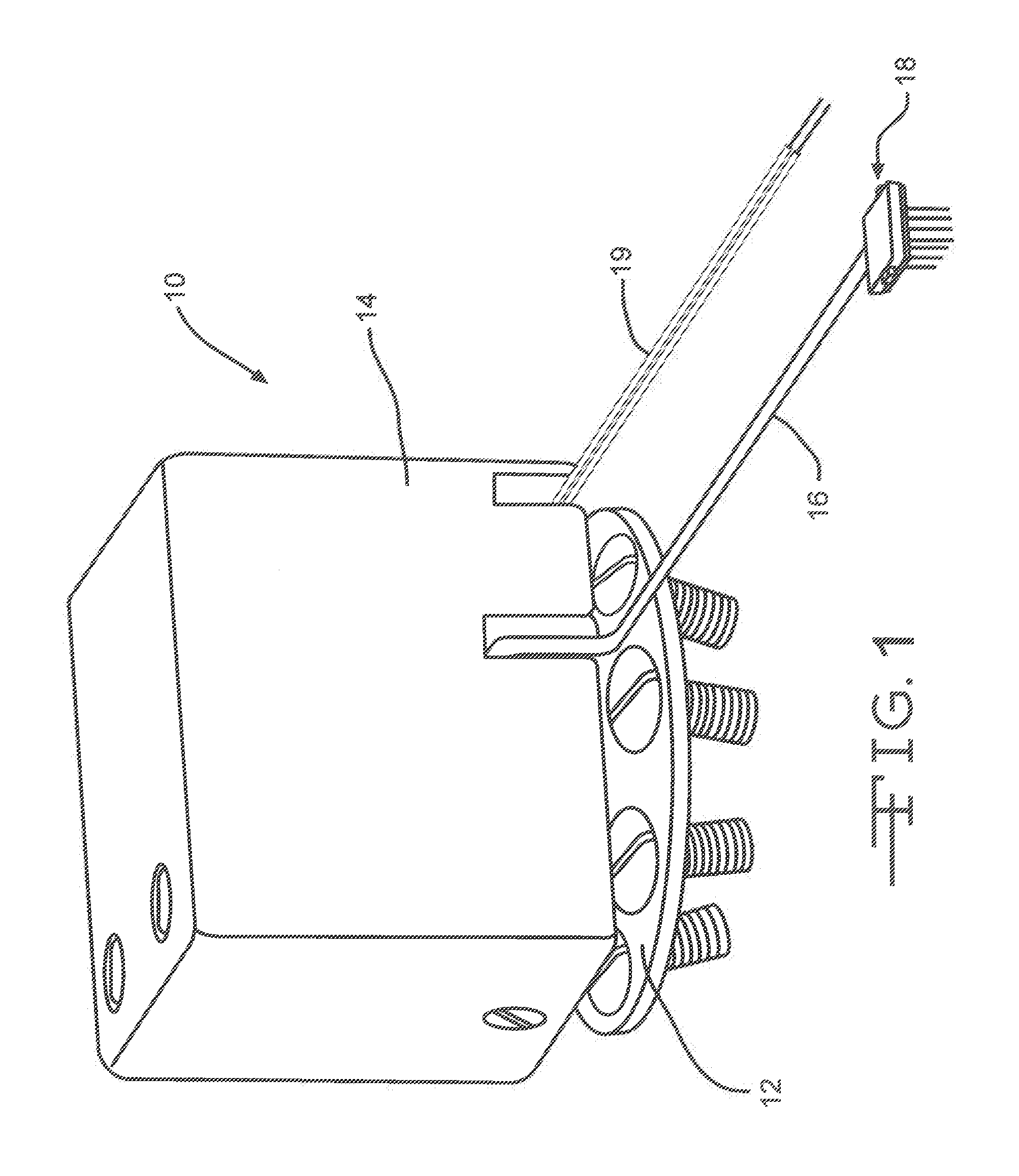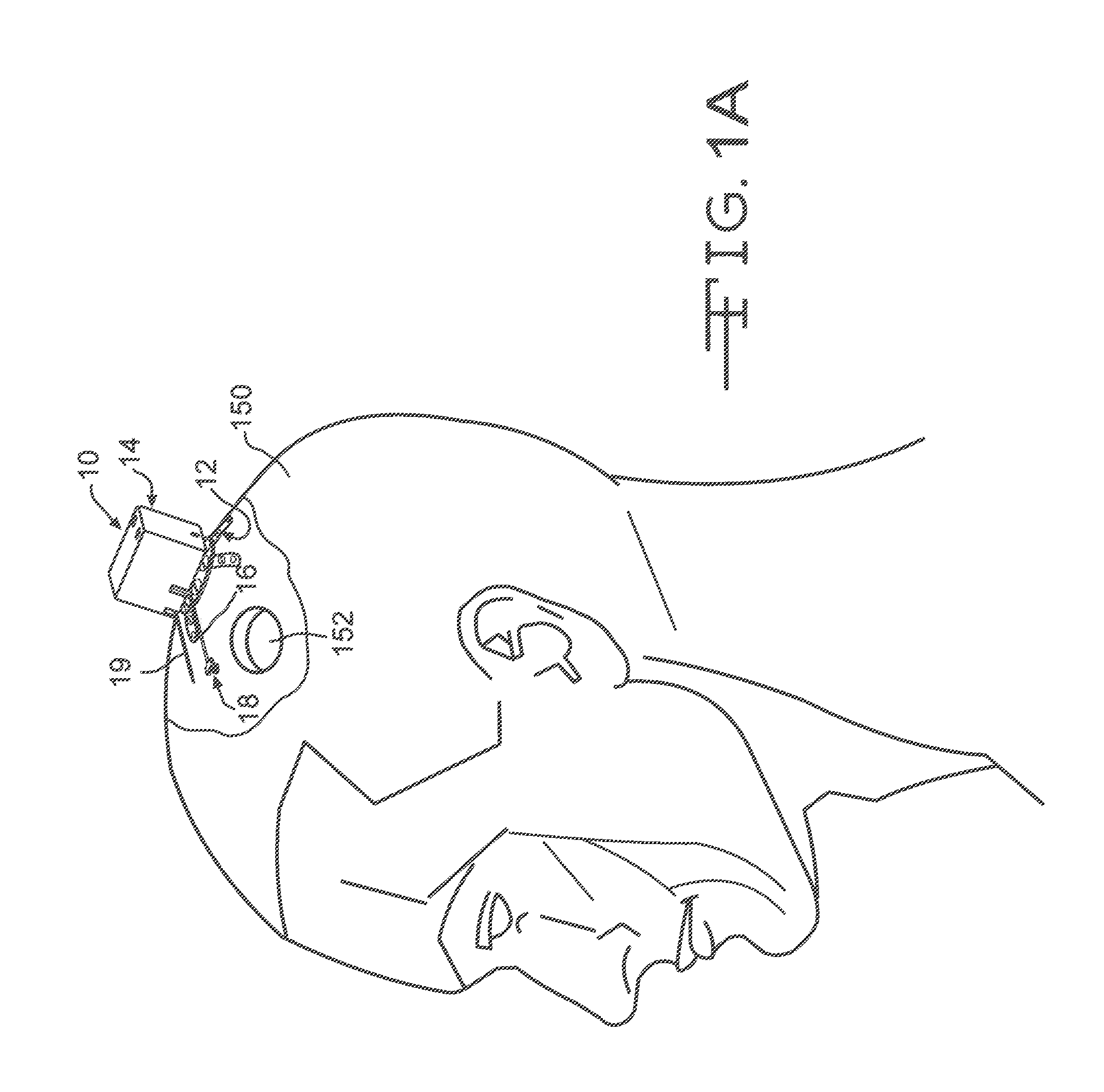Three-dimensional neural probe microelectrode array and method of manufacture
a microelectrode array and three-dimensional technology, applied in the field of three-dimensional neural probe microelectrode array and manufacturing method, can solve the problems of limited ability of commercial electrode array to position electrode contacts in a two-dimensional plan
- Summary
- Abstract
- Description
- Claims
- Application Information
AI Technical Summary
Benefits of technology
Problems solved by technology
Method used
Image
Examples
Embodiment Construction
[0027]Turning now to the drawings, FIG. 1 is a perspective view of a neural probe electrode array system 10 according to the present invention. The neural probe system 10 comprises a skull mounting plate 12 supporting an electronics housing 14. A flexible ribbon cable 16 connects from electronics (see connectors 134A to 134D in FIGS. 15 and 16) in the housing 14 to a neural probe electrode assembly 18. A neural probe electrode assembly 18 according to the present invention includes at least one, and preferably a plurality of neural probe electrode arrays as exemplified in FIGS. 5 and 6. The housing 14 further includes wires 19 for grounding the subject. These wires not only ground the animal, but may be used as a reference when performing differential recording, or as a return path for current when stimulating.
[0028]FIG. 2 illustrates the skull mounting plate 12 comprising a curved mount body 20 supporting a plurality of extending legs 22. The curved body 20 is a dome-shaped member ...
PUM
| Property | Measurement | Unit |
|---|---|---|
| Thickness | aaaaa | aaaaa |
| Thickness | aaaaa | aaaaa |
| Thickness | aaaaa | aaaaa |
Abstract
Description
Claims
Application Information
 Login to View More
Login to View More - R&D
- Intellectual Property
- Life Sciences
- Materials
- Tech Scout
- Unparalleled Data Quality
- Higher Quality Content
- 60% Fewer Hallucinations
Browse by: Latest US Patents, China's latest patents, Technical Efficacy Thesaurus, Application Domain, Technology Topic, Popular Technical Reports.
© 2025 PatSnap. All rights reserved.Legal|Privacy policy|Modern Slavery Act Transparency Statement|Sitemap|About US| Contact US: help@patsnap.com



